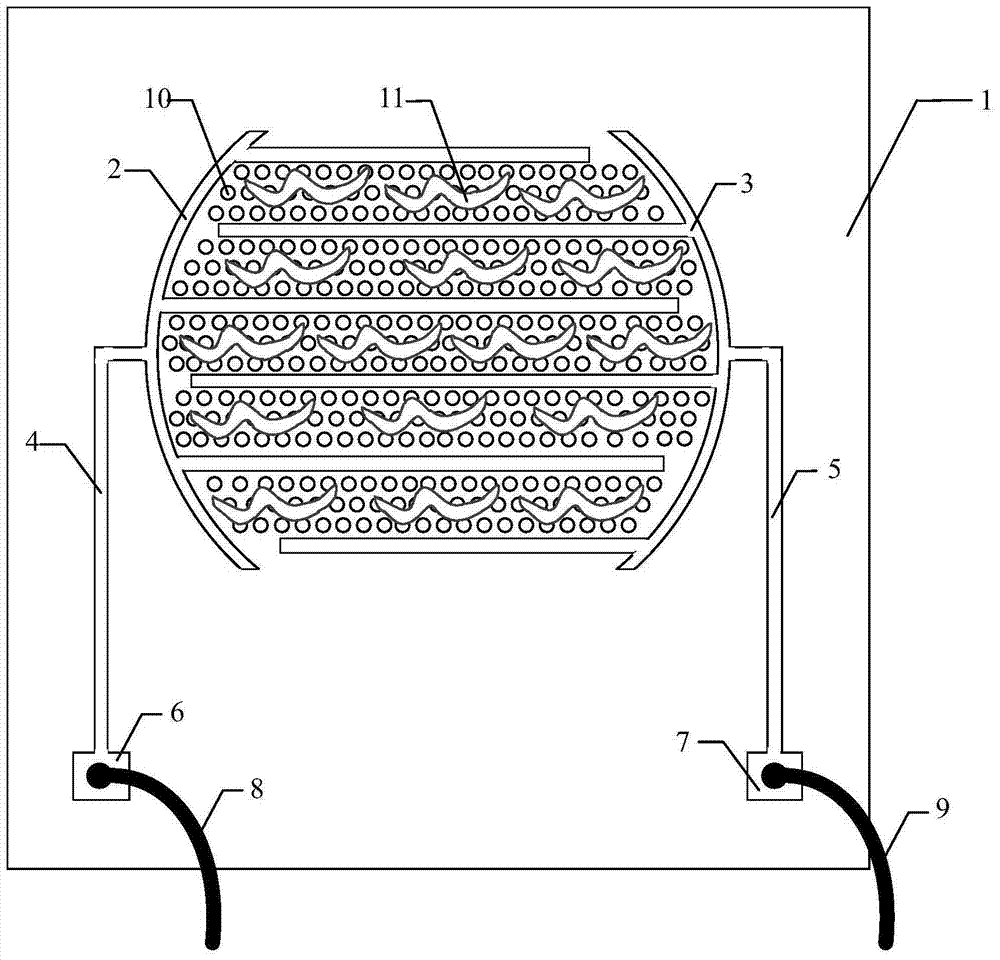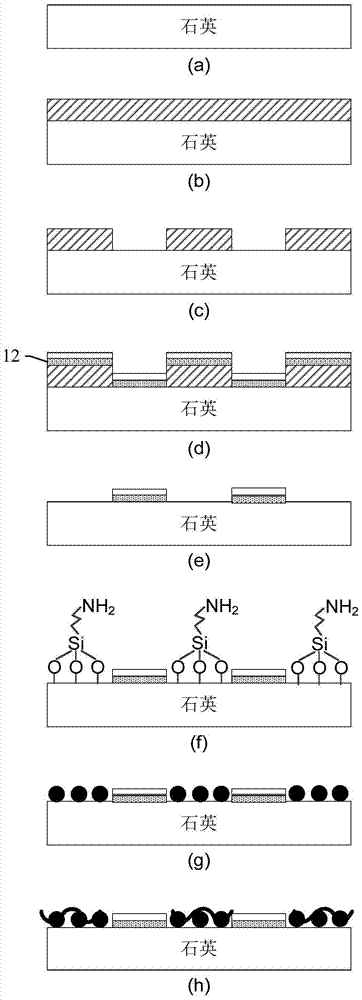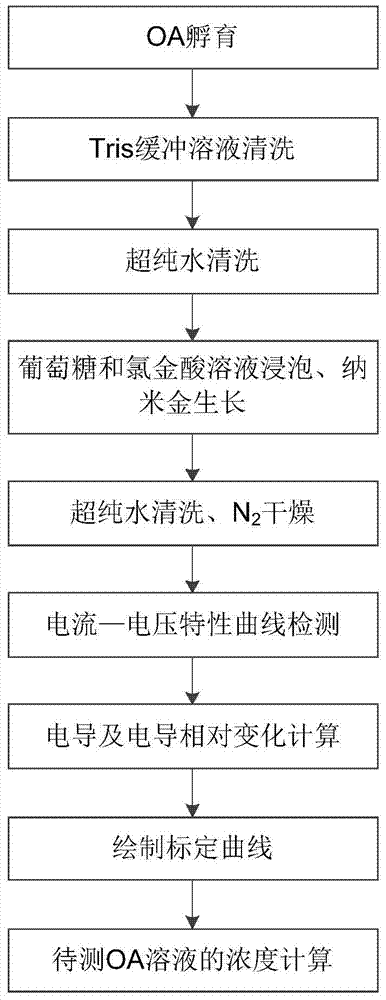Label-free okadaic acid sensor based on self-catalytic growth of gold nanoparticles
A technology of okadaic acid and sensors, which is applied in the field of unlabeled okadaic acid sensors, can solve the problems of poor accuracy and repeatability, high maintenance cost, and large instrument size, and achieve simple operation, easy mass production, cost reduction effect
- Summary
- Abstract
- Description
- Claims
- Application Information
AI Technical Summary
Problems solved by technology
Method used
Image
Examples
Embodiment Construction
[0025] The present invention will be described in further detail below in conjunction with the accompanying drawings and specific embodiments.
[0026] Such as figure 1As shown, the present invention is based on the label-free okadaic acid sensor of nano-gold self-catalytic growth, and the nano-gold particle 10 and the OA aptamer 11 are modified in the gap between the interdigitated electrode pairs of the sensor, and the OA toxin molecule and the OA aptamer The combination of 11 causes structural changes of the OA aptamer 11, exposing the active sites of the gold nanoparticles 10, and the concentration of OA can be calculated from the conductance signal of the sensor after the self-catalytic growth of the gold nanoparticles 10. The okadaic acid sensor of the present invention adopts a label-free detection method, which includes: a silicon dioxide substrate 1, a first comb-toothed electrode 2, a second comb-toothed electrode 3, a first lead 4, a second lead 5, The first pad 6,...
PUM
| Property | Measurement | Unit |
|---|---|---|
| thickness | aaaaa | aaaaa |
Abstract
Description
Claims
Application Information
 Login to View More
Login to View More - R&D
- Intellectual Property
- Life Sciences
- Materials
- Tech Scout
- Unparalleled Data Quality
- Higher Quality Content
- 60% Fewer Hallucinations
Browse by: Latest US Patents, China's latest patents, Technical Efficacy Thesaurus, Application Domain, Technology Topic, Popular Technical Reports.
© 2025 PatSnap. All rights reserved.Legal|Privacy policy|Modern Slavery Act Transparency Statement|Sitemap|About US| Contact US: help@patsnap.com



